Verbena (Vervain)
An easy to grow, varied genus with long-lasting flowers. Some species are hardier than others, but we have found that a sheltered spot and a very free draining soil help plants survive the winter in this part of the country. The nectar-rich flowers are loved by pollinators and if left to go to seed, they will be eaten by birds.
The wiry, stiff stems are self-supporting, removing the need to stake taller varieties. The genus offers a range of plant sizes and flower colours, from white to deep purple.
Verbenas are deciduous, so will die back over the winter months and regrow the following spring. Plants can easily be propagated by cuttings to guarantee plants for the following year.
Ornamental grasses combine well with the airy, wiry stems of verbena. Some of our favourites in the garden include, Stipa gigantea, Stipa ichu, Stipa tenuissima, Pennisetum villosum, Calamagrostis x acutiflora ‘Karl Foerster and Lamprothyrsus hieronymi.
Other favourite partners for verbena include, oenothera, hylotelephium, santolina, stachys, galactites, verbascum and euphorbia.
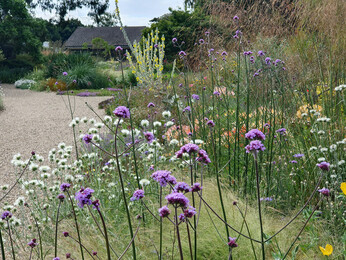
Here is a list of verbenas propagated and sold here:
Verbena bonariensis- (Argentinian vervain)- tall, slender stems carry clusters of tightly packed, lavender-purple flowers lasting from July to September. The small flowers are highly attractive to bees and butterflies. Despite their height, the sparsely leaved, wiry stems create an airy, almost see-through effect, perfect at the front of a border. As plants begin to collapse in autumn and winter, we cut them down to about 30cm to offer the crown some protection over the coldest months. Then come early spring, we cut the remainder of last year’s stems to the ground ready for the new growth. Reaches 1.5m in height and 50cm across.
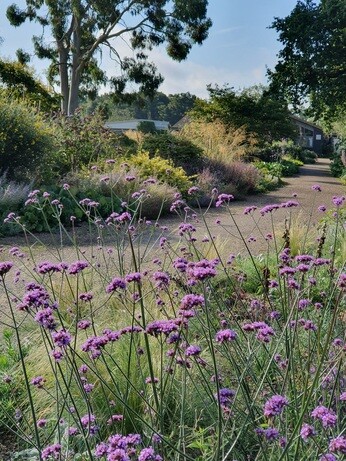
Verbena bonariensis ‘Little One’- the same upright habit of V. bonariensis, but just in miniature form. A perfect plant for growing with small alpine plants. Here at the Gardens, we grow V. bonariensis ‘Little One’ in the circular, raised beds of the Scree Garden. Plants reach a height of 40cm and a width of 20cm.
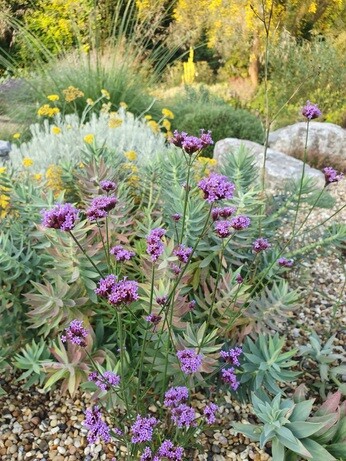
Verbena bonariensis 'Lollipop' - a new lower growing selection of this indispensable long flowering plant. Growing no more than knee high with pretty clusters of lilac-purple flowers from mid-summer to autumn. Loved by butterflies. Will grow to 60cm high and 40cm wide.
Verbena bonariensis 'Lollipop'
Verbena hastata - (Vervain)- a tall, branched verbena, with narrow elongated spikes of pink-purple flowers, above narrow serrated foliage. A good upright accent in the garden border. Similar in habit to Verbena macdougalii 'Lavender Spires'. Reaches 1.5m in height and 50cm across.
Verbena hastata
Verbena hastata f. rosea- upright and slender with tall, branching spires carrying small pink flower spikes over a long period in summer. Ideal for creating vertical interest towards the back of the border. This verbena reaches 1.2m high and 50cm wide.
Verbena macdougalii 'Lavender Spires'- a tall erect perennial with branching spikes of deep lavender flowers from mid-summer to autumn. Loved by butterflies. As it reaches up to 1.6m in height, it is best sheltered from strong winds. As the flowers fade in autumn the unusual structure and seedheads left behind add interest through out winter.
Verbena macdougalii 'Lavender Spires'
Verbena officinalis var. grandiflora 'Bampton'- a recently introduce cultivar that was bred from a variety found growing in the town of Bampton, Devon. Purple tinted foliage all summer long compliments the airy, lavender-pink flower spikes. Must have full sun and a free draining soil. An interesting addition to the winter structure in our Gravel Garden. Plants grow to 90cm in height and 60cm in width.
Verbena rigida- (Garden verbena)- a low growing verbena with jewel-like, deep purple flowers. It is typically used as a bedding plant throughout the summer months as it isn’t considered reliably hardy, but we have found that it will survive in a warm, sheltered position, eventually reshooting from underground runners in spring. V. rigida will reach 60cm in height with a width of 40cm.
Verbena rigida
Verbena stricta- (Hoary vervain)- native to much of North America, coping with dry soils and with its spikes of violet-blue flowers proving attractive to butterflies. The common name comes from the white hair which covers its grey-green leaves and stems. Plants reach 1m in height and width.
Verbena stricta
Written by Leanne Crozier
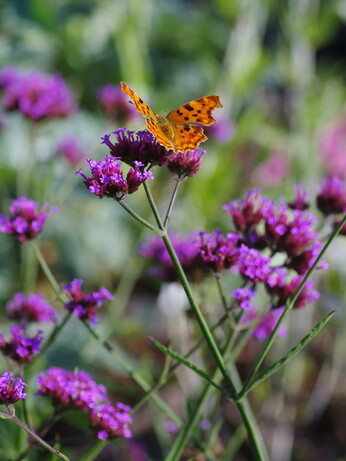
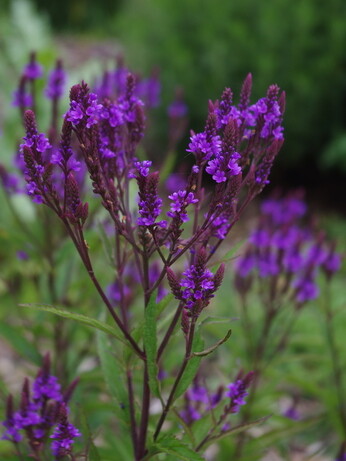
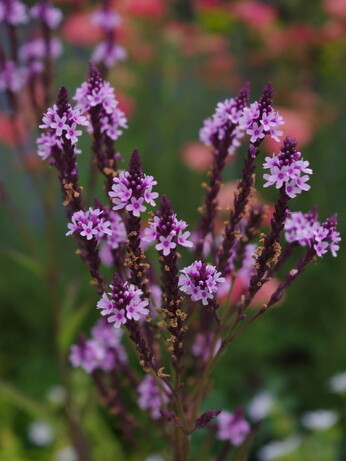
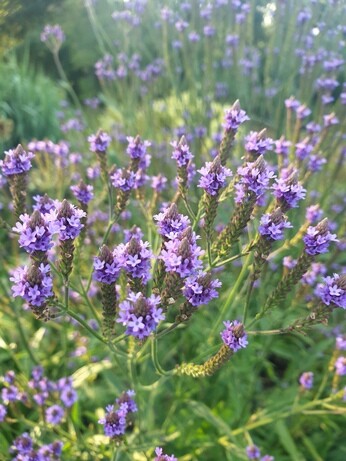
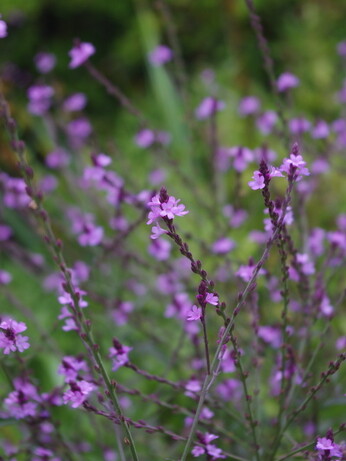
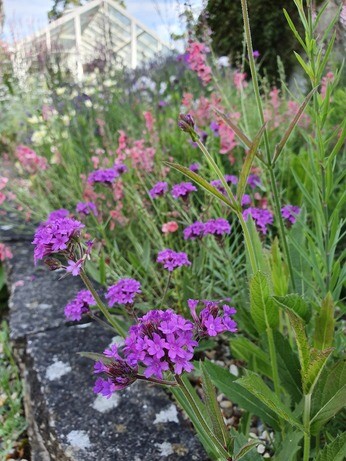
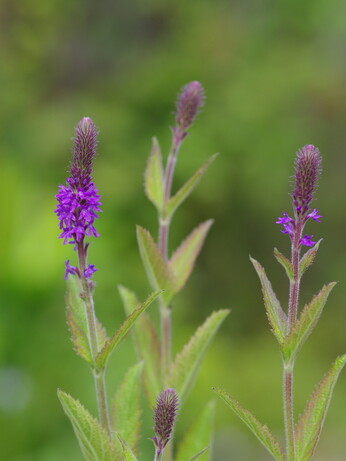
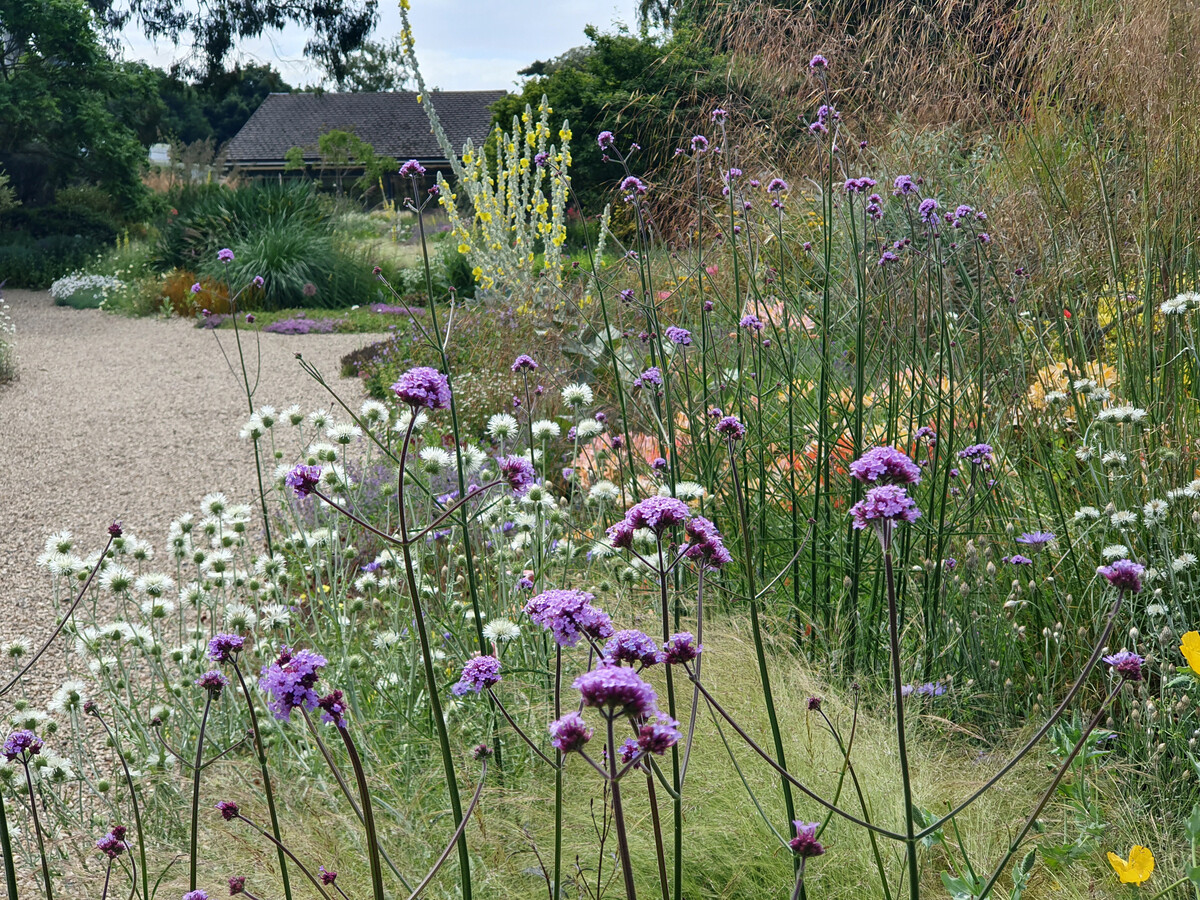

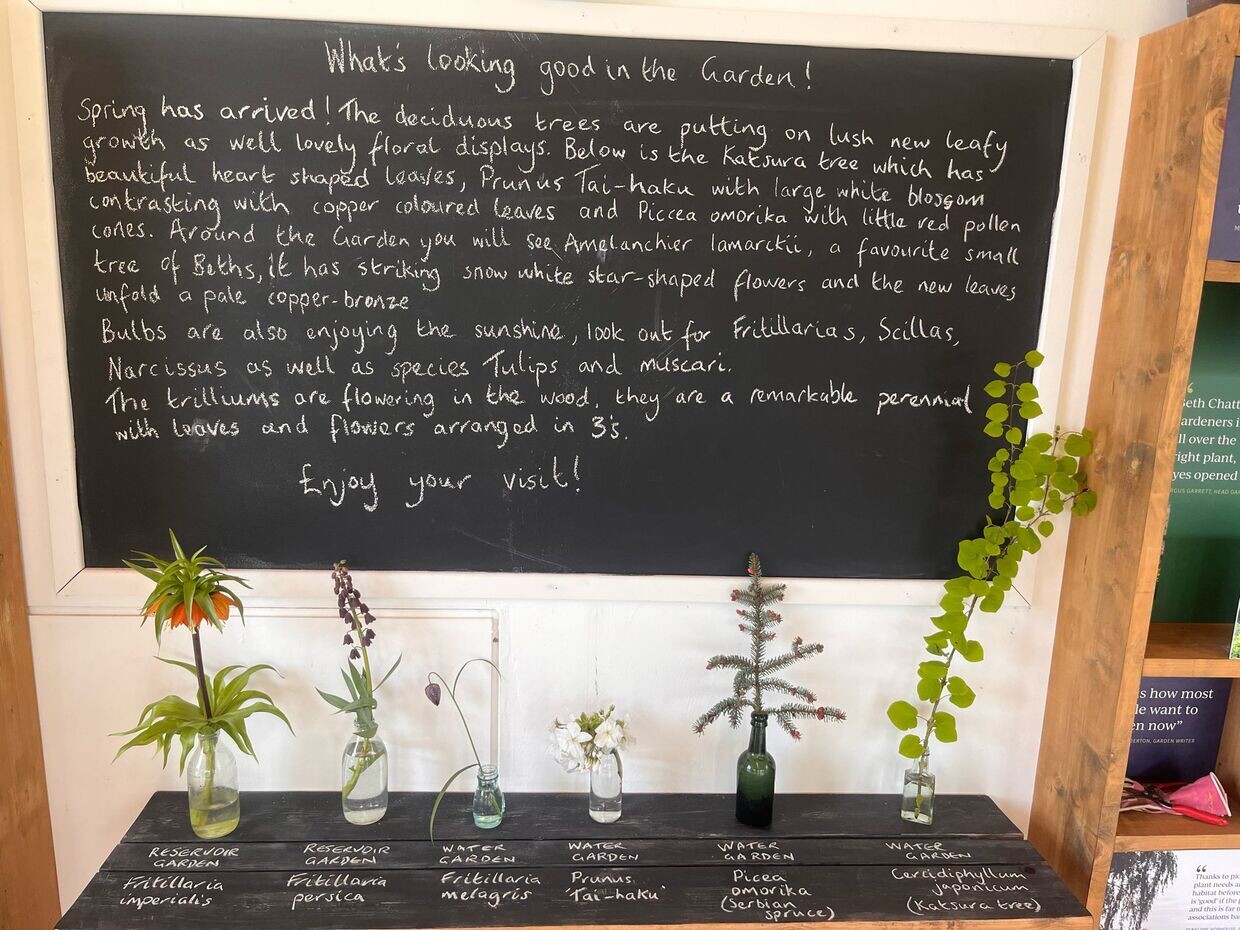

Comments